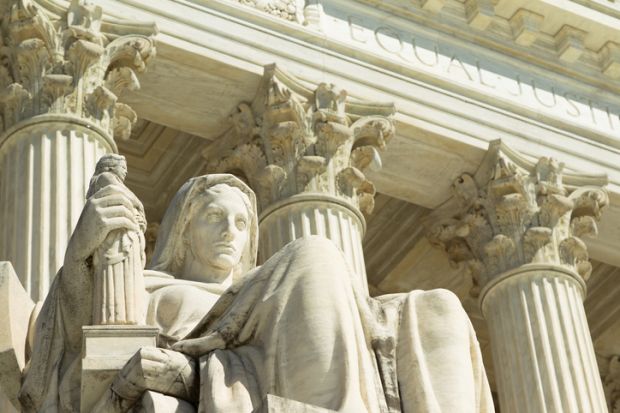The Supreme Court recently heard arguments on the Biden administration’s plan for student loan forgiveness, and it has reignited debate over student debt. While some believe the plan is a necessary step toward addressing the burden of student loans, others argue that it fails to address the real problem of the cost of attending college in the first place. Although a zero-sum dichotomy is politically convenient, the reality is that we must solve both sides of this equation.
I think we can all agree that a financial structure that hamstrings our best and brightest with debt was never a sustainable solution for the American dream. We can and should provide relief to countless graduates who, while they did take out the loans of their own free will, could contribute far more to our country without repayment demands cluttering their mailboxes and collection agencies darkening their doorsteps.
We’ve allowed the fact that individual debts have been created to overshadow the reality that public investment in higher education is a net benefit for society. An educated citizenry is the best bet we can make in writing this nation’s success story. But an education has become harder and harder to attain as state support for public colleges and universities continues to see cuts year after year, resulting in a larger burden on students.
We must ensure the kind of debt-forgiveness that the Biden administration has proposed is never needed again. One way to do so is to focus on investing in public university systems, which educate 75 per cent of America’s four-year public college students. These institutions are best placed to make an impact because they are accountable to the public, meaning that they are more likely to prioritise the needs of students over the interests of shareholders or private donors. They have a mission to provide access to education for all, regardless of socioeconomic status. And, despite the cuts, funding from state governments still allows them to offer lower tuition rates than private institutions do.
The National Association of System Heads (Nash), which represents US public university systems, has begun to measure how systems are already working to reduce student debt. We are capturing both the amount that student debt borrowers accrue during their undergraduate education and their ability to repay this debt over time. Our research shows that two thirds of graduates of public systems took out no federal loans.
Leaders of public higher education systems have pledged that, by 2030, we will have lowered borrowing for low-income students by $7 billion (£5.75 billion). We will decrease the median amount borrowed by Pell Grant students (completers and non-completers) by 25 per cent. And we will reduce the equity gap in three-year repayment rates between Pell recipients and non-Pell recipients by 50 per cent, while preserving the financial tools – including loan options – that students need to access higher education.
How? By data-driven interventions. These have been proven to work in some places and can be scaled at college and university systems across the country.
One example is addressing the lack of course availability, particularly at under-resourced institutions. By leveraging improvement science, Nash is leading a collaboration between the Texas State University System and the university systems of Hawaii, Southern Illinois and Montana to relieve bottlenecks by developing and testing methods for successful course sharing between campuses at the system level. This will allow us to improve time to degree and, thereby, reduce cost and get students earning a good wage faster. Collectively, these four participating systems represent 35 campuses and 238,000 students. And we’re just getting started.
A second example applies those same improvement science methodologies to identify and solve issues related to student transfer between institutions. Nash is leading a team comprising the University of Illinois, the Pennsylvania State System of Higher Education, the Kentucky Council on Postsecondary Education and the Texas A&M University System in an effort to reduce the challenges students face in maintaining their earned credits as they go from institution to institution. By having more credits transferable, these systems – representing 52 campuses and 465,853 students – will, again, improve time to degree and reduce cost for students.
The US lacks a national system of higher education – but, together, our state systems are finding ways to alleviate the strain this lack of coordination has put on our students. We must be willing to invest in and support those systems, however, in their efforts to fulfil their founding purpose of ensuring that every individual, regardless of background or resources, has the best possible chance at success.
For decades, we have kept higher education in this country afloat by foisting the costs of credentials onto the shoulders of students. Instead, we must share those costs with states, which all need a well-trained workforce to thrive. To continue to do otherwise is to imperil the whole nation’s future prosperity.
Nancy L. Zimpher is chancellor emeritus of the State University of New York system and director of the Power of Systems, an effort by the National Association of System Heads to rethink how higher education can advance prosperity for the nation.
Register to continue
Why register?
- Registration is free and only takes a moment
- Once registered, you can read 3 articles a month
- Sign up for our newsletter
Subscribe
Or subscribe for unlimited access to:
- Unlimited access to news, views, insights & reviews
- Digital editions
- Digital access to THE’s university and college rankings analysis
Already registered or a current subscriber? Login








